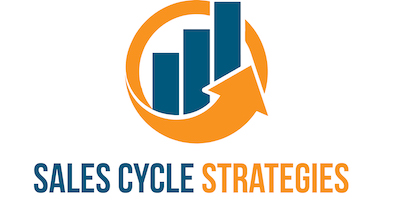SDR stands for “sales development representative”
An SDR is a sales development representative, and their job is to generate new sales qualified leads for a company through research and outreach. They are responsible for finding new customers and then reaching out to them in order to try and generate interest in the company’s products or services.
Sales Development representatives can play a vital role as part of your sales team, and their main goal is to generate new qualified leads that can be converted into customers. In order to do this, they must first conduct research to identify new customers, and then reach out to them through various channels in an effort to generate interest. SDRs must be excellent at research, have strong communication skills, and be relentless in their outreach efforts in order to be successful.
While the primary responsibility of Sales Development Representatives is to generate new qualified leads, they also play a crucial role in nurturing those leads and keeping them engaged with the company. This includes maintaining regular communication, providing updates on new products and services
What makes a Sales Development Representative different from a Sales representative?
The main difference between a Sales Development Representative and a sales representative (commonly referred to as sales reps) is that an SDR’s job is focused on generating new qualified leads, while a sales rep’s job is focused on closing deals with existing leads. Sales reps are only brought in after an SDR has already done the work of researching and outreach to generate a qualified lead for your sales pipeline.
An SDR’s job is to generate new leads by researching a potential customer and reaching out to them through various channels (e.g. email, phone, social media). They are also responsible for qualifying these leads to determine whether or not they are a good fit for the products/services that their company offers.
Sales reps, on the other hand, are responsible for taking over the leads that have been generated by SDRs and converting them into paying customers. They do this by building relationships with leads, understanding their needs, and presenting them with solutions that address their needs.
What can I expect from a Sales Development Representative?
If you are working with an SDR, you can expect them to reach out to you in an effort to generate interest in the company’s products or services. They will likely maintain regular communication with you in order to keep you updated on new developments, and will work tirelessly to try and turn you into a customer.
What experience does a Sales Development Representative
typically have?
An SDR typically has a Bachelor’s degree and some companies may require or prefer candidates with experience in sales, sales process, customer service, or marketing.
Some of the skills that an SDR needs are:
- The ability to research potential leads
- Strong communication skills
- Persistence
- Organization
What are the skills a Sales Development Representative
needs?
In order to be an effective SDR, there are several key skills that are necessary.
- The ability to effectively communicate, both verbally and in writing.
- Work well under pressure and be able to handle objections from customers.
- Being organized and detail-oriented, as well as being able to work independently.
- Be knowledgeable about the products or services that your company offers.
- Active listening skills.
What does a Sales Development Representative
typically get paid?
The average base pay for an SDR is $50,000/year. However, many companies offer commission-based pay structures in addition to base pay, which can significantly increase an SDR’s earnings potential. (source: Glassdoor)
How many calls should a Sales Development Representative
typically make in a day?
This is a difficult question to answer, as it depends on factors such as the SDR’s list size, average call length, and the specific industry they are targeting.
The number of phone calls a Sales Development Representatives should make in a day varies depending on the company and the leads they are given. However, it is not uncommon for an SDR to make 50-100+ calls in a day.
What are an SDR’s daily tasks?
An SDR’s daily tasks include conducting research to identify potential leads, reaching out to those leads through various channels (phone, email, social media), and maintaining regular communication in an effort to generate interest and keep leads engaged.
The day ends with documenting anything that happened during the day in your CRM and preparing for the next.
What are some best practices for an SDR?
Some best practices for an SDR include staying organized, being relentless in their outreach efforts, and maintaining regular communication with leads. Additionally, it is important for an SDR to have a strong understanding of the products/services that their company offers, as well as the needs of their existing customers.
Organization is key for an SDR. Staying focused on the Pipeline will help keep deals moving forward. And, using a Complaint tracker can help identify any issues that may need to be addressed.
Here are a few other best practices to consider:
- Make sure your SDRs have clear goals and expectations.
- Train your SDRs thoroughly on your products and services.
- Set up a rigorous process for measuring results.
- Encourage your SDRs to be creative in their outreach.
- Reward your SDRs for successfully meeting their quotas.
What tools do SDR’s use?
SDR’s have a lot of tools at their disposal to help them with their job. Sales intelligence tools like Salesforce and HubSpot give them the ability to track their interactions with customers and keep track of important sales data. Social media platforms like LinkedIn Sales Navigator and Twitter can be used to research potential leads and connect with them directly. And of course, there are a variety of analytical tools that SDR’s can use to assess their performance and identify areas for improvement. With so many options available, it’s no wonder that SDR’s are able to accomplish so much in a day.
There are also many tools available today to automate repetitive tasks, such as sending emails and making phone calls. Additionally, SDRs often use LinkedIn and LinkedIn Sales Navigator to research potential leads and find contact information. LinkedIn Sales Navigator can also be used to connect with potential customers and set up meetings. By using these tools, SDRs can be more efficient in their job and close more deals.
What are some common challenges an SDR faces?
Common challenges that an SDR may face include:
- Generating enough interest from potential leads to get them to engage in further communication
- Qualifying leads properly to ensure that they are a good fit for the company’s products/services
- Dealing with rejection on a daily basis
- Maintaining high levels of motivation and persistence
How can and SDR overcome these challenges?
Some tips for overcoming these challenges include:
- Focusing on building relationships instead of selling
- Qualifying leads thoroughly before moving them onto a sales representative
- Creating a system for tracking and following up with leads
- Staying motivated by setting goals and celebrating small victories
What resources are available to help SDRs succeed?
What resources are available to help SDRs succeed? There are a few key resources that can help SDRs to be successful.
The first resource is training. It is important for SDRs to receive comprehensive training on the products and services they are selling. This training should cover all aspects of the products and services, including how to use them and how to sell them.
The second resource is coaching. A good coach can help an SDR to identify areas in which they need improvement and can provide guidance on how to improve.
The third resource is a strong sales process.
Finally, support from upper management is also a key resource for SDRs. When managers are supportive of their sales teams and have a good sales process, it can lead to better performance from the team as a whole.
How can an SDR be successful?
The best way to be successful as an SDR is to have excellent research abilities, strong communication skills, and to be relentless in your outreach efforts. Additionally, it is important to stay organized and maintain regular communication with leads.
The most important thing for an SDR to remember is that the key to success is excellent research abilities, strong communication skills, and persistence. Additionally, it is important to stay organized and maintain regular communication with leads.
An SDR must be able to handle rejection, as it is a common occurrence in the job. It is also important to keep track of leads so that you can follow up regularly and not let them go cold. Finally, because the job can be overwhelming at times, it is crucial to take breaks and not burn yourself out.
What is the career path for an SDR?
The career path for an SDR can vary depending on the company, but typically it involves progressing into a full-time sales or sales manager role. Many SDRs start out in an entry-level position and work their way up the ladder as they gain more experience. Some companies also offer SDRs the opportunity to move into other departments, such as marketing or customer success.
Overall, the career path for an SDR can be very rewarding, offering growth opportunities and the chance to work with a variety of people. If you are interested in working in sales, then an SDR position may be a good option for you.
What’s the best way to train an SDR?
The best way to train an SDR depends on the specific needs of the company and the skills of the SDR. However, some basic training might include research methods, outreach strategies, and communication skills. Some companies also offer specific sales development training programs.
Some common training strategies for SDRs include role-playing, practice presentations, and listening to sales calls (Gong.io is a great tool for this). These activities help SDRs learn how to best approach potential prospects, understand customer needs, and develop the skills needed to close a deal.
Training is important for sales success, but it’s also important for SDRs to stay up-to-date on the latest industry trends and changes. This allows them to better understand their customers’ needs and pain points. Additionally, keeping up with current trends ensures that the SDR is able to offer the most relevant and helpful solutions to their prospects.
How do I measure an SDR’s performance?
One way to measure an SDR’s performance is by looking at the number of new leads they are able to cultivate into sales opportunities for your sales team. Other factors that can be considered include the quality of the leads, the conversion rate of leads to sales, and overall customer satisfaction.
It is also important to consider the time an SDR spends on each task, as this can impact their productivity. For example, if an SDR is spending too much time on administrative tasks, they may not have enough time to reach out to new leads.
These sales process metrics can be used to compare different SDRs and identify which ones are more successful (and efficient) in converting leads into customers.
What is an SDR?: In Summary
We hope this article provided some additional knowledge you can leverage to grow your business. If you want to learn more about how we can help your business grow check out our other resources or , please send us a note. We would love to discuss how we could work together to increase sales.




